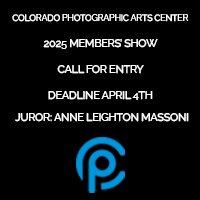Do Process: Caitlyn Soldan
This week I am featuring artists exhibiting in Verve Gallery’s Do Process exhibition, showcasing eight unique approaches to the photographic process.
I had the great pleasure of meeting Caitlyn Soldan when I was visiting the Verve Gallery. Not only is Caitlyn a gallery assistant, she is the gallery’s Featured Online Artist this month, a category of gallery representation that debuts emerging artists. Caitlyn very kindly shared a variety of the work from the exhibition, pulling from drawers to explain the varied processes used in the work. The images Caitlyn is exhibiting is entitled Thin Veils, using the Mordançage process. In the work, she takes self-portraits using a pinhole camera. Caitlyn takes her cues from Victorian spirit photography – portraits with spirits. Thus, the images in this exhibition are Caitlyn’s visual improvisations of ghosts, spirits, and hauntings. Caitlyn’s work is ethereal, esoteric, and allegorical.
Caitlyn was born in Chicago and graduated from Savannah College of Art and Design in June 2011 with a BFA in Photography. Her work explores themes of history, memory and time. Caitlyn prefers working with film and alternative processes but also enjoys exploring the possibilities of combining historical processes with new technology. Her work has been exhibited throughout the United States and France. Caitlyn presently resides in Santa Fe, New Mexico.
Mordançage is a 20th century process created by Jean-Pierre, which is based on a 19th century process known as bleach-etch. Bleach-etch is a reversal process for film negatives. The process involves stripping away the darkest parts of the emulsion of a silver gelatin print. This image transformation creates a relief, or a raised area on the print. Water is used to float the delicate silver emulsion on the image so as to rearrange it and dry it back down onto the print. The end result is a one-of-a-kind and thus unique photographic image. The artist chose the Mordançage process for this series because it enhances the themes of time, decay, and mortality in her work. The process also gives the images mysterious and otherworldly qualities, separating them from reality.
Posts on Lenscratch may not be reproduced without the permission of the Lenscratch staff and the photographer.
Recommended
-
Photography Educator: Frank LopezMarch 21st, 2025
-
TOP #20 Cyanotypes: BotanicalsMarch 15th, 2025
-
Ellen Friedlander: The Soul SpeaksJanuary 23rd, 2025
-
James Nakagawa: American TruthsJanuary 22nd, 2025
-
In Conversation with Brenton HamiltonJanuary 13th, 2025









































































